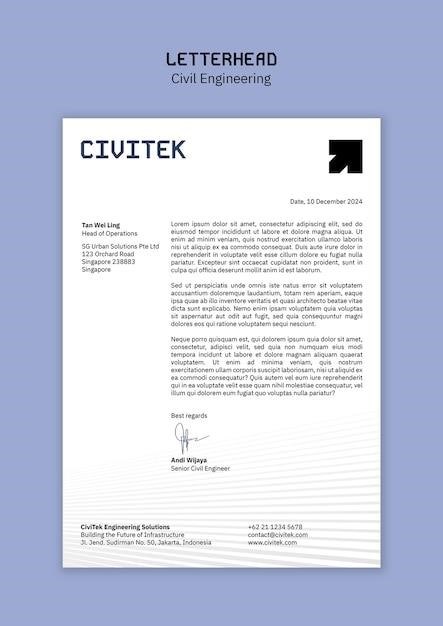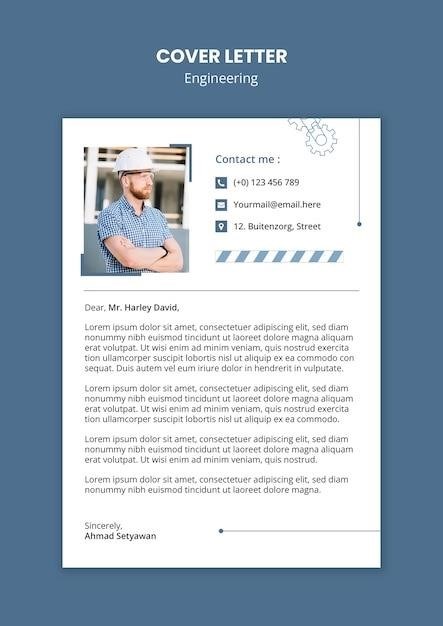Reference Letter Sample PDF⁚ A Comprehensive Guide
A reference letter is a written and signed document that provides feedback on an individual’s performance, leadership, and work ethic. It is also known as a letter of reference and is required for a variety of applications, such as college, grad school, internships, and more. A reference letter sample PDF is a pre-formatted document that can be used as a guide when writing a reference letter. It often includes sections for the introduction, body paragraphs, and conclusion, as well as tips for writing a strong reference letter. Using a reference letter sample PDF can help you create a well-organized and professional reference letter that effectively highlights the applicant’s skills and qualifications.
What is a Reference Letter Sample PDF?
A reference letter sample PDF is a pre-formatted template designed to guide users in crafting effective reference letters. It’s a digital document that outlines the essential components of a strong reference letter, providing a structured framework for writers. These templates often include sections for the introduction, body paragraphs, and conclusion, offering a visual roadmap for organizing thoughts and presenting information clearly. Reference letter sample PDFs are readily available online, offering a convenient resource for individuals seeking to write compelling and professional reference letters.
Why Use a Reference Letter Sample PDF?
Reference letter sample PDFs offer a range of benefits for writers. First, they provide a clear structure, ensuring that all essential elements are included. This helps to maintain a professional and consistent format, making the letter more impactful. Second, these templates often include helpful tips and suggestions for crafting compelling content, ensuring the letter effectively highlights the applicant’s strengths and qualifications. Finally, using a sample PDF can save time and effort by eliminating the need to start from scratch, allowing writers to focus on tailoring the content to the specific applicant.
Key Components of a Reference Letter Sample PDF
A reference letter sample PDF typically includes several key components that guide the writer in creating a comprehensive and effective letter. These components ensure that the letter is well-structured and includes all the necessary information. A common structure includes an introduction, body paragraphs, and a conclusion. The introduction establishes the writer’s relationship with the applicant and states the purpose of the letter. The body paragraphs delve into specific examples of the applicant’s skills, achievements, and character. Finally, the conclusion reiterates the writer’s positive assessment and offers a recommendation for the applicant.
Introduction
The introduction of a reference letter sample PDF serves as a crucial starting point, setting the stage for the overall content. It typically begins by clearly stating the writer’s name, position, and organization, followed by a brief explanation of their relationship with the applicant. This section also establishes the purpose of the letter, explicitly stating that it is a recommendation for the applicant. A strong introduction establishes credibility and sets the tone for the remainder of the letter.
Body Paragraphs
The body paragraphs of a reference letter sample PDF are the core of the document, where the writer provides specific and detailed information about the applicant’s skills, qualifications, and experiences. These paragraphs typically focus on the applicant’s strengths, achievements, and contributions, providing concrete examples to support the writer’s claims. The body paragraphs should be tailored to the specific application and highlight the applicant’s most relevant skills and experiences.
The conclusion of a reference letter sample PDF serves as a strong and concise summary of the writer’s overall assessment of the applicant. It typically reiterates the applicant’s key strengths and qualifications, reaffirming the writer’s recommendation. The conclusion should be positive and enthusiastic, leaving a lasting impression on the recipient and reinforcing the writer’s confidence in the applicant’s abilities. It may also include a statement about the writer’s willingness to provide further information or answer any questions.
Types of Reference Letters
Reference letters can be tailored to specific situations and purposes. Professional reference letters are typically written by former employers or colleagues, highlighting an individual’s work experience and skills. Personal reference letters are written by friends, family members, or mentors, focusing on character, personality traits, and personal qualities. Academic reference letters are written by professors or teachers, providing insights into a student’s academic performance, research abilities, and potential for future success.
Professional Reference Letters
Professional reference letters are typically written by former employers or colleagues, focusing on an individual’s work experience and skills. They provide insights into the applicant’s job performance, work ethic, leadership qualities, and ability to collaborate with others. These letters often highlight specific examples of the applicant’s achievements, contributions, and areas of expertise. Professional reference letters are crucial for job applications, promotions, and other professional opportunities.
Personal Reference Letters
Personal reference letters are written by individuals who know the applicant personally, such as friends, family members, or neighbors. They provide a different perspective on the applicant’s character, personality, and personal qualities. These letters often highlight the applicant’s integrity, trustworthiness, communication skills, and ability to work independently or as part of a team. Personal reference letters are often required for applications related to housing, volunteer opportunities, or other non-professional situations.
Academic Reference Letters
Academic reference letters are written by professors, teachers, or other academic advisors who have worked with the applicant in an educational setting. These letters typically focus on the applicant’s academic abilities, research experience, and potential for success in a particular field of study. They may also comment on the applicant’s work ethic, critical thinking skills, and ability to contribute to the academic community. Academic reference letters are often required for applications to graduate schools, scholarships, and research opportunities.
Tips for Writing a Strong Reference Letter
A strong reference letter goes beyond simply stating that the applicant is a good person; it provides specific and detailed examples of their skills, achievements, and character. To craft a truly compelling letter, consider tailoring the content to the specific recipient, providing concrete examples of the applicant’s performance, highlighting relevant skills and experience, and maintaining a professional tone throughout. These elements will make your reference letter stand out and effectively advocate for the applicant.
Tailor the Letter to the Specific Recipient
A generic reference letter will not be as impactful as one that is tailored to the specific recipient and the position for which the applicant is applying. Take the time to research the organization and the job requirements, and use this information to highlight the applicant’s skills and experiences that are most relevant to the position. This personalized approach will demonstrate your thoughtfulness and strengthen your recommendation.
Provide Concrete Examples
Instead of simply stating that the applicant is “hardworking” or “a team player,” provide specific examples that illustrate these qualities. Describe a time when the applicant went above and beyond to complete a task, or how they effectively collaborated with others to achieve a common goal. These concrete examples will make your recommendation more persuasive and believable.
Highlight Relevant Skills and Experience
Focus on the skills and experience that are most relevant to the applicant’s goals. If they are applying for a job, highlight their relevant work experience and skills. If they are applying for a scholarship, focus on their academic achievements and leadership skills. Tailor your letter to the specific requirements of the application.
Maintain a Professional Tone
Your reference letter should be written in a professional and formal tone. Avoid using slang, jargon, or personal anecdotes that are not relevant to the applicant’s qualifications. Use clear and concise language, and make sure your grammar and punctuation are correct. A professional tone will help to convey your credibility and the seriousness of your recommendation.
Where to Find Reference Letter Sample PDFs
Finding reference letter sample PDFs is easier than you might think. Numerous online resources, template websites, and professional organizations offer free and downloadable templates. You can search for “reference letter sample PDF” on search engines like Google or Bing, or explore specialized websites dedicated to providing free document templates. Professional organizations related to your field might also offer tailored reference letter samples.
Online Resources

The internet is a treasure trove of reference letter sample PDFs. Search engines like Google and Bing are your first port of call. Simply enter “reference letter sample PDF” and you’ll be presented with a wealth of options. Websites like Template.net and EasyLegalDocs offer a wide array of free and customizable reference letter templates. These platforms often provide diverse formats, including Word, PDF, and Google Docs, allowing you to choose the most convenient option.
Template Websites
Dedicated template websites like Template.net and EasyLegalDocs are excellent resources for finding reference letter sample PDFs. These platforms offer a wide variety of templates, often categorized by profession or purpose, making it easy to find the right fit. Many of these templates are free to download and customize, allowing you to create a professional-looking reference letter without starting from scratch. These websites often provide helpful tips and guides on writing strong reference letters, ensuring you craft a compelling recommendation.
Professional Organizations
Many professional organizations provide resources and templates for their members, including reference letter sample PDFs. These organizations often have specific requirements and guidelines for reference letters, which can be helpful for ensuring your letter meets the necessary standards. For example, a medical association might offer a reference letter template specifically for physicians, while an engineering society might provide templates for engineers. By checking the resources offered by professional organizations relevant to the applicant’s field, you can find tailored templates and guidance for writing effective reference letters.
Using Reference Letter Sample PDFs Effectively
While reference letter sample PDFs offer a valuable starting point, it’s crucial to use them effectively. Don’t simply copy and paste the template; personalize it to reflect the specific applicant and the position they are applying for. Proofread meticulously for any errors in grammar or spelling. Consider seeking feedback from others, especially those with experience in writing reference letters, to ensure the letter is well-written and impactful. Finally, send the letter professionally, ensuring it arrives on time and in the correct format.
Customize the Template
A reference letter sample PDF is a great starting point, but it’s essential to personalize it to reflect the specific applicant and the position they’re seeking. Adapt the language to match the applicant’s strengths and experiences, highlighting relevant skills and accomplishments. Don’t simply fill in the blanks; tailor the content to create a compelling and unique recommendation. This personalized touch demonstrates your genuine support and adds weight to your endorsement.
Proofread Carefully
Once you’ve customized your reference letter, it’s crucial to thoroughly proofread it for any errors in grammar, spelling, or punctuation. A polished and error-free letter reflects professionalism and attention to detail. It’s also a good idea to have someone else read the letter to catch any mistakes you might have missed. This extra step ensures that your reference letter presents a positive and professional impression of both you and the applicant.
Seek Feedback from Others
Before sending your reference letter, consider seeking feedback from others. Ask a trusted colleague, friend, or mentor to review your letter for clarity, conciseness, and overall effectiveness. Their fresh perspective can help you identify any areas that need improvement or ensure that your letter is well-written and impactful. This additional step can enhance the quality of your reference letter and increase its chances of making a positive impression on the recipient.
Send the Letter Professionally
Once your reference letter is finalized, ensure it’s sent professionally. If the recipient requires a hard copy, use high-quality paper and a professional envelope. If sending electronically, use a professional email address and a clear subject line. Include your contact information in the letter, in case the recipient has any questions. Delivering the letter in a professional manner demonstrates your attention to detail and respect for the recipient, making a positive impression.
